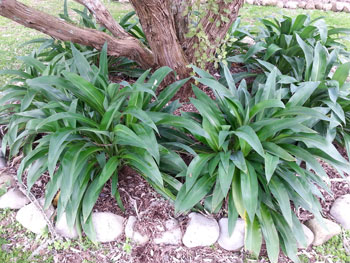 I’m in the process of building an edible garden near the house that will provide vegetables and herbs for the table and a lovely place to relax with family and friends around the fire pit and bbq. Whilst the edible side of this project will not involve many native plants, there is certainly room for using native plants in a creative manner to soften edges and fill spaces. These plants will provide the garden with continuity throughout the year, whereas many of the edible plants will be in a continuous state of change.
I’m in the process of building an edible garden near the house that will provide vegetables and herbs for the table and a lovely place to relax with family and friends around the fire pit and bbq. Whilst the edible side of this project will not involve many native plants, there is certainly room for using native plants in a creative manner to soften edges and fill spaces. These plants will provide the garden with continuity throughout the year, whereas many of the edible plants will be in a continuous state of change.
The citrus trees have all been pruned off the ground and down to a useable level which has provided a space beneath for a cluster of rengarenga lilies (Arthropodium bifurcatum or A. cirratum). These attractive plants tolerate shade, cope with dry soil conditions, produce clusters of delicate white flowers in spring and will also hide all the fallen and rotting fruit. Another alternative for underplanting citrus could be the hen and chicken fern (Asplenium bulbiferum).
I’m often asked if there are any native alternatives for a box hedge. These short hedges were often used as boarders around gardens including edible and herb gardens. One native species that can be used for creating small hedges is manuka (Leptospermum scoparium). Cultivars of manuka clip well, are tolerant of a wide range of soil conditions, and come in a variety of sizes and leaf colour. In addition, the flowers are abundant, come in a range of colours (pink, white, red) and are great for attracting pollinators into your garden area; which is vital for good fruit set. If a formal clipped hedge is not your thing, try selecting a range of specific manuka cultivars that will provide flowers almost all year round.

